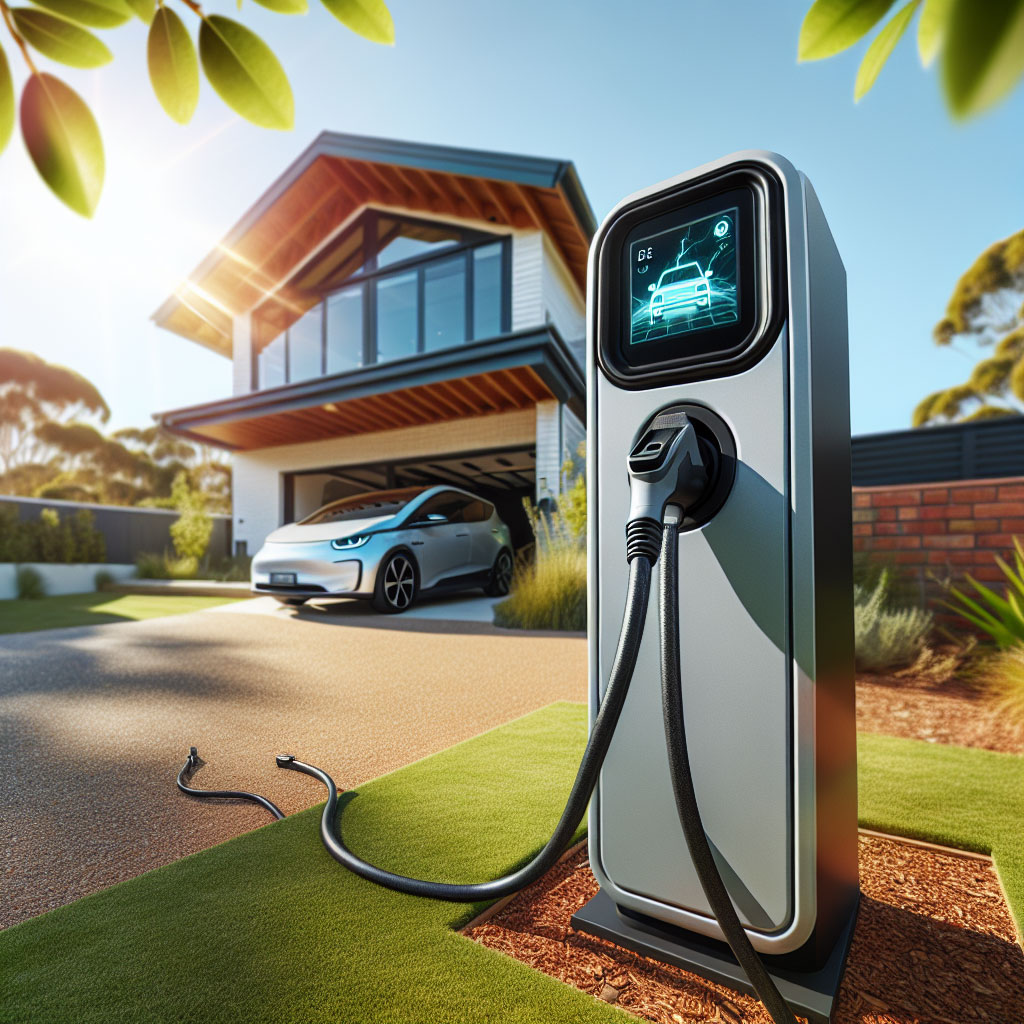
Australia’s electrification of transport is accelerating. Home batteries have already shifted from niche to mainstream, fuelled by the Cheaper Home Batteries scheme and the installation of roughly 1,000 home batteries a day – a rate installers liken to the early rooftop solar boom. Vehicle-to-grid (V2G) technology, which turns electric vehicles into mobile batteries, could be the next inflection point for distribution networks. If policy and planning don’t keep pace, the consequences could be significant.
Why scale matters
ARENA’s projection of 300,000 bi-directional V2G-capable EVs by 2030 is not hypothetical – it is a plausible near-term scenario. Those vehicles are “batteries on wheels”: one EV can store and discharge several times the energy of a typical home battery. If many of them export simultaneously, their combined output could be enormous. A synchronised discharge from 300,000 EVs could deliver around 2,200 MW – roughly the sudden output of two large coal-fired units entering the grid in the evening. That magnitude of export or simultaneous charging would present new technical and operational challenges for Distribution Network Service Providers (DNSPs).
EV uptake outpacing the grid
EVs now account for more than 12% of new-car sales in Australia, and the proportion of vehicles capable of bi-directional charging is rising. DNSPs that spent the past decade adapting to rooftop solar and home batteries are already turning their attention to V2G. Evidence is emerging that V2G behaviour diverges from traditional EV charging patterns.
The National Grid’s multi-year Electric Nation Powered Up trial found that conventional “typical load profiles” do not apply to V2G users. Participants commonly discharged vehicles into their homes in the evening and recharged overnight, raising overnight demand relative to households with conventional EVs. Instead of just a consumption peak in the evening, V2G can create export peaks when users send power back to the grid during high-tariff periods. Without visibility at substation or feeder level, DNSPs risk being blind to these patterns and unable to accurately calculate hosting capacity or detect constraints.
Why network visibility is essential
Real-time monitoring and advanced low-voltage network modelling will be critical to manage a widespread V2G rollout. AEMO has already instructed Victorian DNSPs to maintain a Minimum System Load Demand when solar generation exceeds demand, an operational response that can limit charging or discharging of Battery Energy Storage Systems (BESS) and V2G vehicles. If DNSPs can see what is happening at feeder and substation level, they can target interventions more precisely – whether those are tariff signals, constraint management or targeted network upgrades.
Modelling commissioned by EA Technology for an Australian DNSP highlights the stakes. Stress testing across eight prototypical feeder types showed thermal limits could be breached at EV penetration rates as low as 9.3% for some feeders and up to around 30% for others. When thermal limits are reached, capacity is constrained and DNSPs face the choice between demand management measures and costly network augmentation. This variation underscores that hosting capacity is not uniform – it depends on feeder design, customer numbers and local connection characteristics. Forward-looking modelling therefore matters: it can reveal where V2G will be benign, where it will be an asset and where it could create risk.
From guesswork to data-driven planning
At present, DNSPs lack the granular data needed to plan confidently for V2G. Regulatory funding for low-voltage network upgrades is limited and without investment in monitoring and analytics the opportunity to use live and historical data for scenario testing will be lost.
With the right investment, networks can model power quality, voltage and capacity constraints in near real time. That visibility enables targeted upgrades, smarter tariff design and more effective use of non-network solutions such as demand response and strategically sited BESS. EA Technology’s collaboration with EEA New Zealand demonstrates the benefits of open communication standards for managing distributed energy resources (DERs). Open protocols allow retailers, DNSPs and regulators to coordinate DER growth – from rooftop solar to EVs – and integrate them into grid operations more effectively.
How to get it right for “batteries on wheels”
The path to successful V2G integration is clear:
- Invest in low-voltage monitoring and analytics so DNSPs can see and model real-world V2G behaviour.
- Use forward-looking hosting-capacity studies tied to feeder typologies rather than relying on generic assumptions.
- Design tariffs and incentives that align consumer behaviour with system needs, for example encouraging daytime charging when there is surplus solar generation.
- Leverage non-network options (demand response, aggregated V2G, BESS) before pursuing costly network reinforcement.
- Adopt open communication standards to enable coordination between market participants and regulators.
Viewed strategically, V2G can be an asset: with real-time network insights, fleets of bi-directional EVs could provide fast, flexible capacity to stabilise voltage and manage peaks. Without that data and coordination, thousands of mobile batteries drawing or exporting power at the wrong times will introduce risk rather than resilience.
Conclusion
V2G is not a distant possibility – it is arriving alongside a rapid rise in EV adoption. For DNSPs, the choice is between proactive, data-driven planning and reactive, costly responses to emergent problems. Investing in low-voltage visibility, targeted modelling and open data standards will allow networks to harness V2G as a controllable resource rather than a disruptive unknown. With thoughtful policy, incentives and system visibility, Australia can turn “batteries on wheels” into a major opportunity for grid flexibility and decarbonisation.
FAQs
Q: What is vehicle-to-grid (V2G)?
A: V2G is a bi-directional charging technology that allows electric vehicles to discharge electricity back to a home or the grid as well as charge from it. This turns EV batteries into mobile energy resources that can provide demand response, frequency support or local backup.
Q: How many V2G-capable EVs does ARENA forecast by 2030?
A: ARENA has projected up to 300,000 bi-directional V2G-capable EVs by 2030 in a plausible uptake scenario.
Q: Why is V2G different from home batteries and rooftop solar?
A: EVs are mobile and typically have much larger battery capacity than a home battery. Their charging and discharging patterns are linked to travel behaviour and can create export or consumption dynamics that differ from stationary DERs, making local network impacts more variable and harder to predict without monitoring.
Q: What risks do V2G fleets pose to distribution networks?
A: Without visibility and planning, simultaneous charging or discharging by large numbers of EVs can cause thermal breaches, voltage excursions and capacity constraints on feeders and substations, potentially forcing costly network upgrades or operational constraints.
Q: What should DNSPs do now to prepare?
A: DNSPs should invest in low-voltage monitoring, adopt advanced feeder-level modelling, work with regulators on funding approaches for upgrades, pursue open communication standards, and create tariff and incentive frameworks that guide consumer behaviour to align with system needs.
Q: Can V2G be a net benefit to the grid?
A: Yes. When properly integrated, V2G can provide fast-response capacity, help balance variable renewable generation and reduce the need for some network augmentation. Its value depends on visibility, control systems, and market/regulatory frameworks that properly reward flexibility.
About EV Evolution
EV Evolution is the leading online platform dedicated to Australian electric vehicle owners and enthusiasts. We foster a vibrant community, delivering essential EV news and insights, and enhancing user engagement through our innovative, AI-powered chatbot for dynamic discussions. Our mission is to empower Australian electric vehicle owners and enthusiasts by fostering a vibrant, AI-driven online community that connects, informs, and advances the nation’s electric vehicle landscape.




